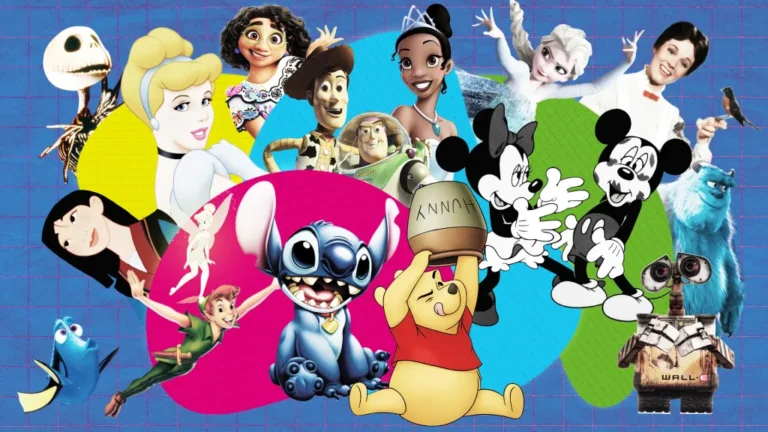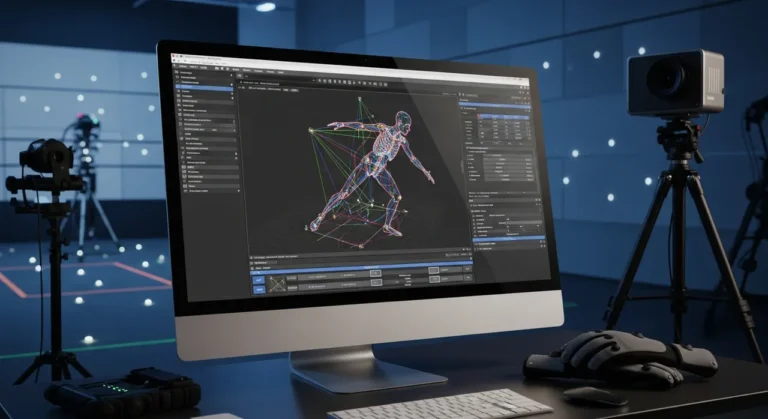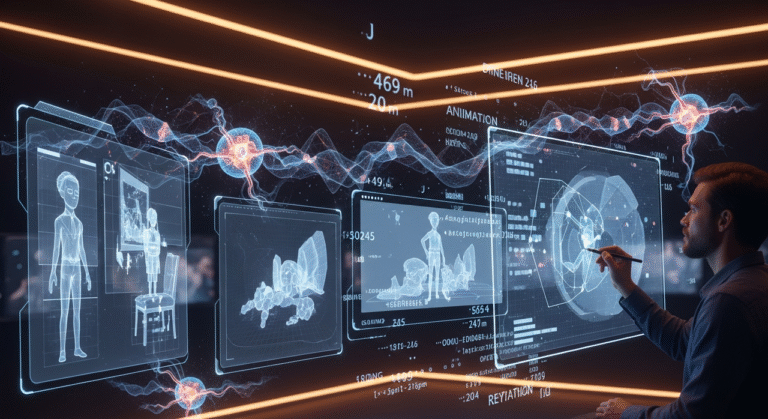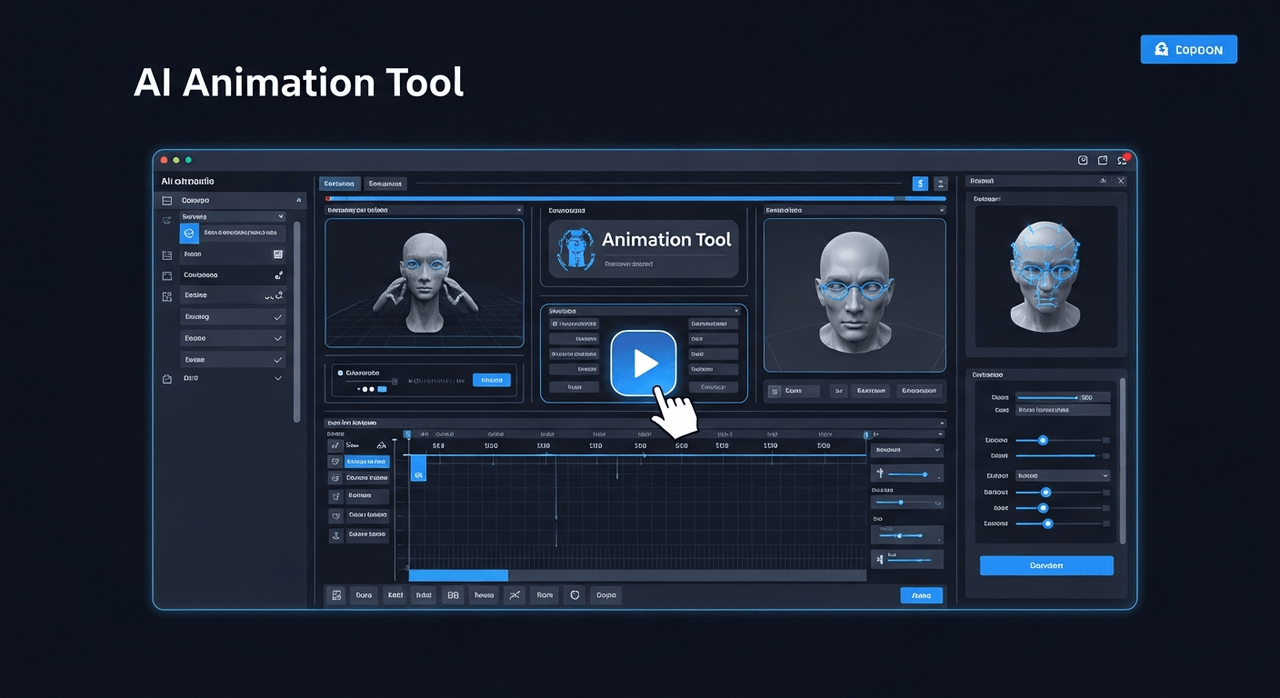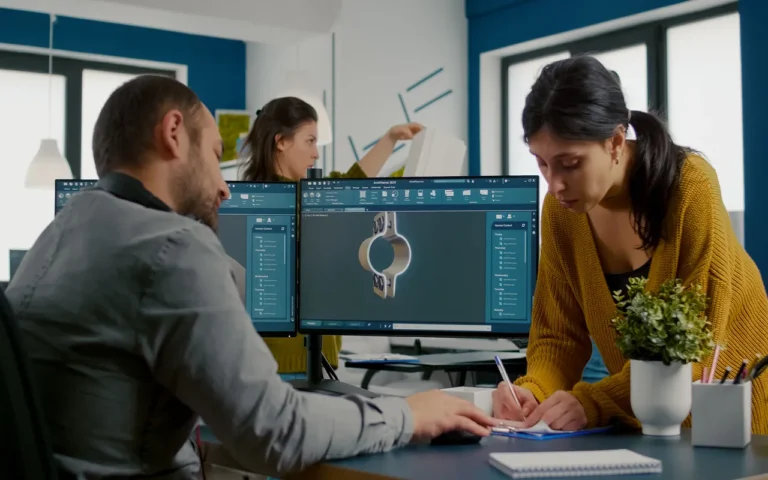Among many forms of advertisement media, animation has a superpower: It engages viewers with unorthodox imagery and snappy movements. It draws us into the creative world of stories in the blink of an eye.
Commercial animation is a powerful marketing tool for businesses of all sizes and comes in different forms and styles. It can be a state-of-the-art 3D animation with full-blown characters and detailed scenes, or it can feature hand-drawn 2D characters with a beautiful art style, or even a motion graphic that contains simple shapes that are brought to life by creative and complex movements.
In this article, we will explore commercial animation, different styles and techniques for creating animated ads, as well as the software used to create them. Stay tuned!
What is Commercial Animation?
Based on the medium on which an animated commercial video will be published, advertisers usually choose a style that fits the platform’s visual look and trends its users are accustomed to. Understanding the role of animation in marketing helps explain why certain styles perform better on specific platforms.
2D explainer videos and motion graphics are a better fit for ad campaigns targeting a YouTube audience compared to 3D animated videos.
Television advertisements on the other hand, are the realm of established, prestigious brands that deploy a hefty marketing budget to achieve high engagement through visually exciting 3D animated commercials.
Read More: The Most Creative Animated Commercials We Saw in 2025

Need Animation Services?
Visit our Animation Service page to see how we can help bring your ideas to life!
Different Types of Commercial Animation
Let’s get into the details of various commercial animation types:
3D Commercial Animation
3D animation is probably the most popular way of producing animation for advertising. We conceive the world around us in three dimensions, that is why 3D animated characters and objects stimulate a pleasant reaction in our mind.3D characters with interesting physiques and movements are visually appealing. Since the advent of the technology, businesses all over the world have benefited from ad campaigns powered by commercial 3D animation. It suits almost every type of media outlet. Whether a 3D animated commercial is going to appear on mainstream TV or before a YouTube video, it will be equally engaging.
Software Used to Produce 3D Commercial Animation
The industry-standard software for creating 3D animation has always been Autodesk Maya. Maya’s powerful character animation and rigging tools have made it very popular among studios and artists. 3D commercial animation can also be made with Blender, Cinema 4D and 3ds Max, which, like Maya, are 3D modeling software and animation software. A 3D animation pipeline might include other specialty software for sculpting, texturing and cloth design as well. Maxon Zbrush, Mari, Substance Painter and Marvelous Designer are examples of such software.
Explainer Videos
Explainer videos are the simplest form of commercial animation. They are short-form videos with simple visuals used for sales, marketing and even educational purposes. They contain pre-made animations of some simple characters with limited animation and movement. This type of animation is not meant to create stunning visuals, but rather to explain a topic, a service, or anything that requires a lot of details in the form of text, charts and infographics. Explainer videos are an accessible, inexpensive and easy form of commercial animation. However, they are less engaging and might sometimes look visually boring compared to other animation styles.
Software Used to Create Explainer Videos
Explainer videos can be produced using a variety of animation software. Adobe After Effects paired with Adobe Illustrator is one of the main workflows for creating them. Other software such as Wondershare Filmora is used to create them as well. Due to their relative simplicity, explainer videos are usually created with ready-made templates via various online services.
Motion Graphics
Although explainer videos are considered a type of motion graphics, the term motion graphics has a more specific meaning in the commercial animation spectrum. In the CGI industry, motion graphics typically refer to animated videos featuring vibrant, harmonic and fast-paced moving elements. Character animation is often minimal in motion graphics. Engaging the audience through a dynamic range of motions and graphic effects masterfully applied to shapes and text to convey information is the main idea behind motion graphics. Satisfying motions and transitions as a means of keeping the viewer engaged is motion graphics’ primary goal which are used in animated crypto ads. Overall, motion graphics are powerful tools for creating advertising animation.
Software Used to Create Motion Graphics
The industry-standard for creating 2D motion graphics is Adobe After Effects. The software allows achieving complex motion with precise controls through a powerful suite of keyframing animation features. Another reason why After Effects is popular among motion graphics artists is the ability to use the JavaScript programming language within the program for automating tasks. 2D motion graphics are the primary way small and midsize enterprises (SME) create commercial animation for the web and social media.
When it comes to 3D motion graphics, however, Cinema 4D is the industry-standard. Although 3D motion graphics can be produced using other 3D packages like Maya and Blender, Cinema 4D has specialized tools for Motion Graphics. Cinema 4D’s MoGraph is are set of various tools, including generators, effectors, and shaders that enable artists to create 3D motion graphics faster. The software’s seamless integration with Adobe After Effects is also another reason why Cinema 4D is used to create 3D motion graphic commercial animation.
2D Commercial Animation
Brought to life by drawings, 2D animation incorporates either hand-drawn images or vector-based graphics to tell stories. 2D animators draw and animate characters on a flat canvas using specialized software. 2D animation itself has different styles and comes in various forms. The classic Disney style of 2D animation that is also known as traditional frame-by-frame animation is a labor-intensive and costly type of 2D animation. Since producing high-quality traditional 2D animation with a unique and memorable art style is a lengthy process, a compelling story is also required to make the effort worthwhile. Thus, this type of commercial animation is usually chosen by global brands with long-term advertisement campaigns and substantial budgets.
Software Used to Create 2D Commercial Animation
Traditional 2D animation can be made using various 2D animation software. Toon Boom Harmony, Adobe Animate and Moho are used widely. 2D animation is made using two major techniques, hand-drawn frame-by-frame animation and digital cut-out animation. Frame-by-frame animation is more time-consuming and expensive and is a good medium for creating visually exciting 2D animated commercials. Digital cut-out animation, on the other hand, can be produced faster but it is not as good looking as hand-drawn frame-by-frame animation.
Live-Action, Animation and Visual Effects
Another popular technique to produce commercial videos is to combine live-action footage (real video captured with cameras) with animated elements and visual effects. The movie Ted is an example of this genre. This genre is particularly popular because it allows the integration of highly creative 3D imagery and visual effects with real-world scenarios/products. Live-Action, visual effects and animation are combined and made into one final image using a technique called compositing.
Read More: Animation vs. Live Action
Software Used to Produce Visual Effects Commercials
This style of commercial videos can be created using compositing software such as Foundry Nuke and Adobe After Effects. Rendered images of 3D models, animations, or visual effects, along with live-action footage recorded with cameras, are imported into compositing software to create a unified look. With the help of software like Nuke, visual effects artists can tweak some details such as lighting to make the final render look as if visual elements were in the real footage.
2D vs. 3D Commercial Animation
The choice between 2D and 3D art shapes the story you tell.
As we previously discussed, both styles captivate viewers, but they shine in different ways!
Let’s see how they compare:
- 2D Animation:
Picture a hand-drawn world: simple, bold, and full of charm.
2D animation uses flat images, like cartoons, to craft playful, approachable ads.
Think of a quirky mascot dancing across the screen, selling cereal with a grin. It’s budget-friendly, quick to produce, and perfect for grabbing attention with vibrant, stylized art.
- Style: Nostalgic and artsy, evoking sympathy.
Process: Artists draw or sequence frames using tools like Adobe Animate or Toon Boom. - Strength: Affordable, fast, and ideal for simple, fun messages.
- 3D Animation:
Now imagine a lifelike product spinning in space: 3D animation builds depth and wow-factor.
It creates realistic or fantastical models, like a sleek car zooming through a city or a soda can bursting with fizz.
- Style: Immersive and modern, with rich details.
- Process: Model, rig, and animate with Blender or Maya for dynamic motion.
- Strength: Eye-catching, versatile, and great for premium or tech-focused ads.
The Takeaway:
2D wins with charm and simplicity, perfect for light, relatable pitches. 3D stuns with depth, ideal for bold, high-impact campaigns.
Your choice depends on your brand’s vibe: cozy and fun or sleek and grand?
Benefits of Using Animation in Commercials
Animation transforms commercials into memorable stories, hooking viewers in ways live-action can’t.
Here’s why brands love it:
- Grabs Attention: Bright colors, wild characters, and fluid motion stop scrollers.
- Simplifies the Complex: Explain tricky ideas, like how a gadget works, with clear, fun visuals.
- Boundless Creativity: No limits—fly to fantasy lands or shrink to a cell’s size to show a product’s power.
- Emotional Pull: Cute critters or heroic figures spark joy, trust, or excitement, bonding viewers to your brand.
- Versatility: Fits any tone with transmedia storytelling, playful for kids and sleek for tech, across TV, social media, or billboards.
Best Practices for Effective Animated Commercials
Crafting an animated commercial that captivates and converts is a joyful mix of art, strategy, and heart.
You’re not just pitching a product! You’re weaving a delicate yet vibrant story that lingers with viewers.
Below, we will review the key practices for making your ads successful!
- Know Your Audience!
Understanding who you’re talking to is the foundation of a great ad.
Dive into their world: kids might adore a playful, colorful 2D cartoon with a goofy mascot, while tech-savvy adults could be wowed by a sleek 3D reveal.
Tailor every detail, from the animation style to the tone of the message, to feel personal and relatable. Listen to their needs and dreams, and your commercial becomes a friendly handshake they won’t forget.
- Keep It Snappy!
Time flies for viewers, so make every second count!
Aim for a tight 15- to 30-second spot to grab busy eyes without losing their spark.
Hook them instantly: kick off with a bold burst of motion, like a quirky character diving in or a dazzling effect, to seize attention in those crucial opening moments.
Short doesn’t mean rushed; pack it with punchy energy and a clear point, leaving them curious and eager for more.
- Tell a Story!
Stories tug at our souls and turn a sales pitch into a moment of connection.
Craft a mini-tale, perhaps a shy robot finds courage with your app, or a tired traveler perks up with your drink, making viewers care.
Weave your brand in naturally, showing how your product saves the day in a fun, relatable way. A strong narrative, even in seconds, sticks in their minds.
- Polish the Look!
Your ad’s visuals are the wow factor, so make them irresistible. Splash the screen with vibrant colors—bright reds, cool blues—to catch the eye, and ensure smooth, flowing motion brings every frame to life.
- Call to Action!
Seal the deal with a clear, friendly nudge!
Wrap up by telling viewers exactly what to do: “Grab yours now!” or “Visit us today!”, with an upbeat, inviting tone.
Make it effortless: flash a simple website URL or a scannable QR code so they can leap into action, whether buying, browsing, or sharing.
A strong, warm call to action turns their excitement into steps, tying your story to real results with a smile.
Examples of Successful Animated Commercials
Let’s explore some standout examples that show animation’s power in action!
Coca-Cola’s “Happiness Factory”
Coca-Cola’s “Happiness Machine” is a joyful gem that brings a vending machine to life in 3D glory: A colorful machine surprises folks with drinks, balloons, and goodies, bursting from the screen with lively motion.
The ad’s vibrant animation and upbeat energy tie Coke to pure delight, spreading smiles like fizz in a bottle.
Tony the Tiger for Kellogg’s Frosted Flakes
Everyone loves Tony the Tiger, the 2D star of Kellogg’s Frosted Flakes, roaring “They’re gr-r-reat!” with boundless energy.
Simple yet striking animation, paired with a catchy slogan, makes cereal feel exciting and friendly. Decades strong, Tony’s charm built unshakable loyalty, showing how 2D can create a lovable icon that lasts.
Geico’s Gecko
Geico’s gecko is a clever little hero, blending 2D charm with 3D flair to pitch insurance with a wink.
This adorable creature struts through scenes, chatting in a warm accent, cutting through dull ads with personality.
It worked wonders! Viewers adore him, and Geico became a household name, all thanks to animation’s versatile magic.
Final Thoughts
Commercial animation comes in different styles and forms to capture viewers’ attention and establish a pleasant image of a brand in their mind. There are many factors that contribute to the effectiveness of commercial animation such as compelling storytelling, art style, characters, environments and last but not least memorable voice acting.
Deciding on the type of animation for advertising can be somewhat tricky. Choosing which animation style to opt for requires careful examination of the target audience and the brand’s visual preference. Whether opting for a 2D or a 3D commercial video is a subjective choice in the end. One good thing about animation though, is that with enough passion and effort, it usually yields stunning results.
